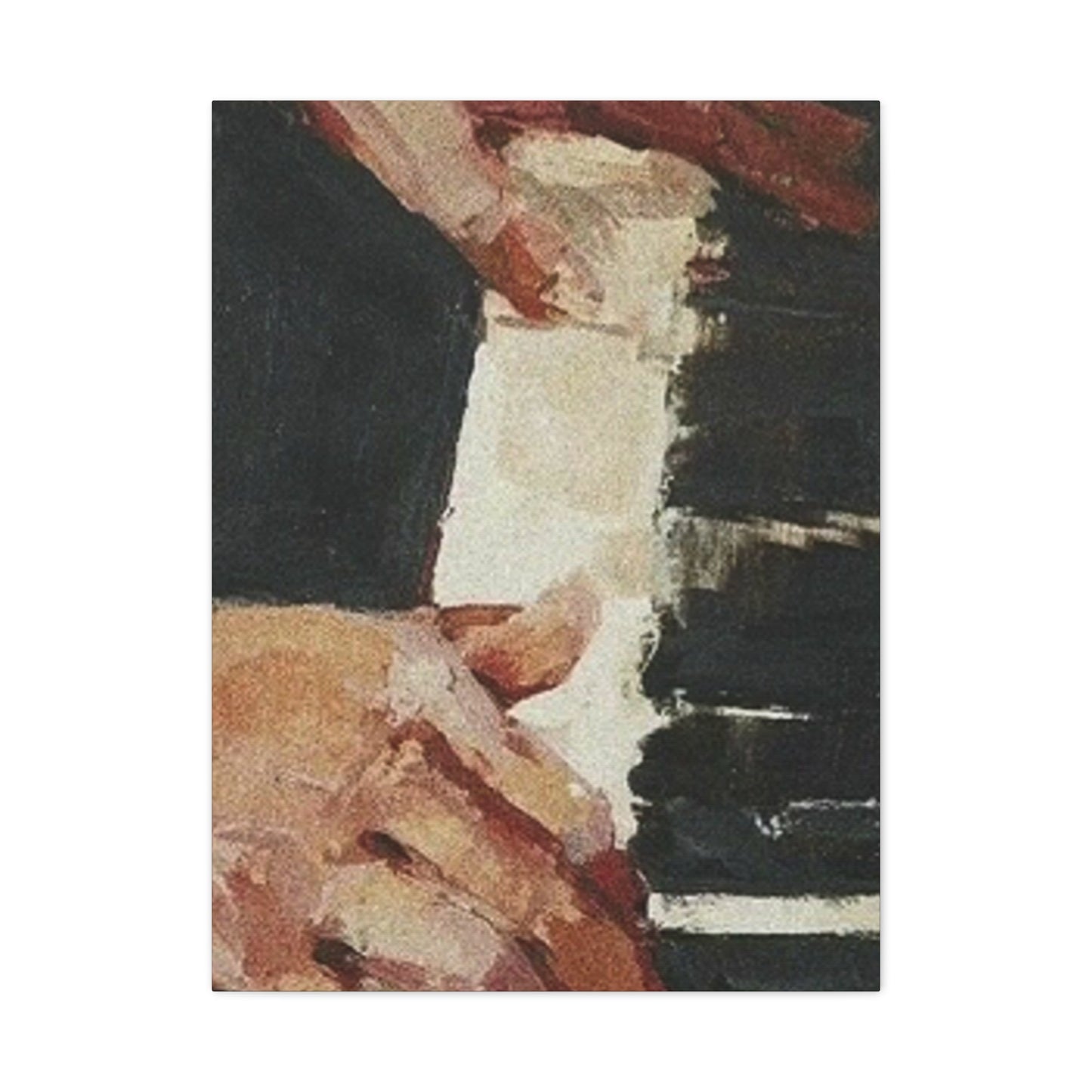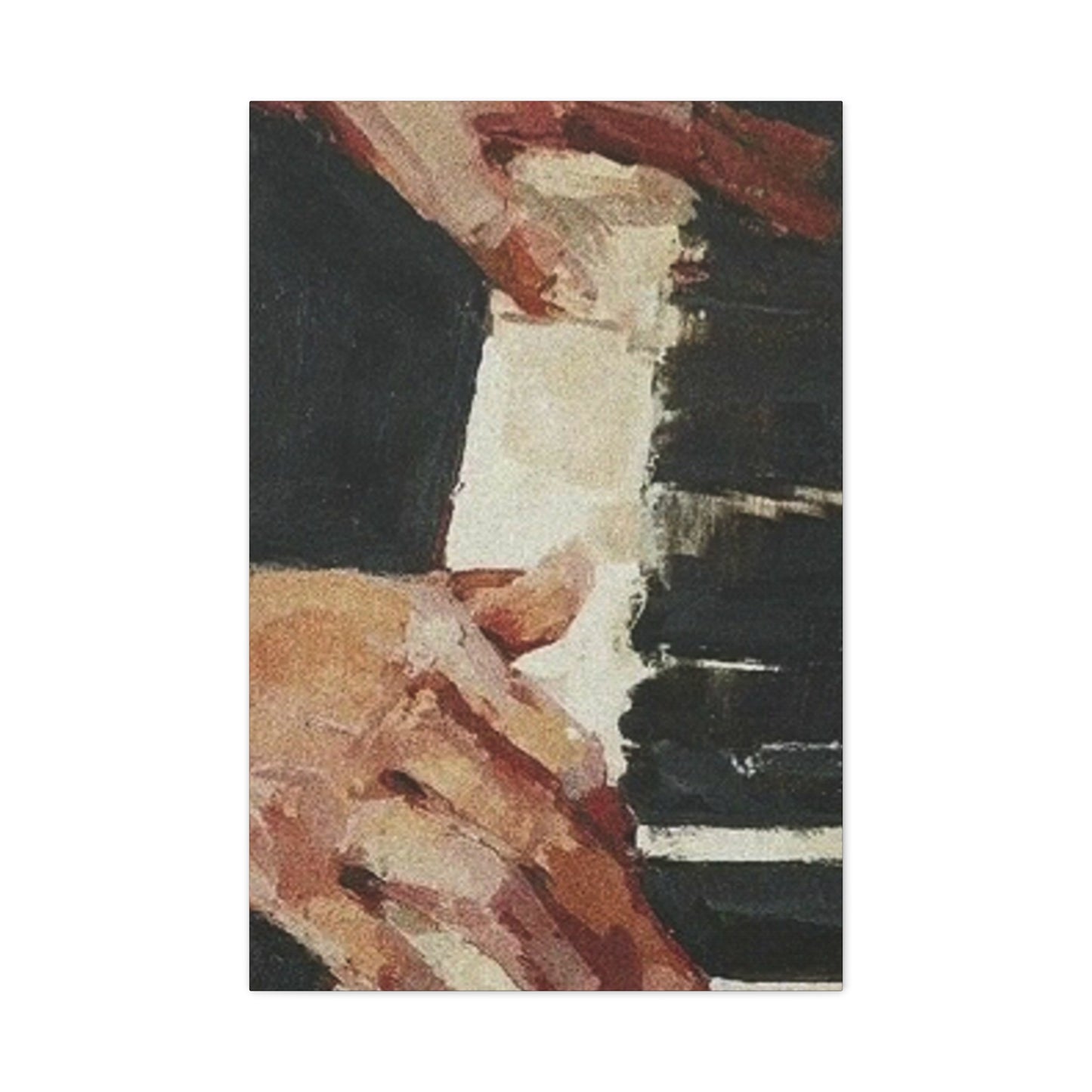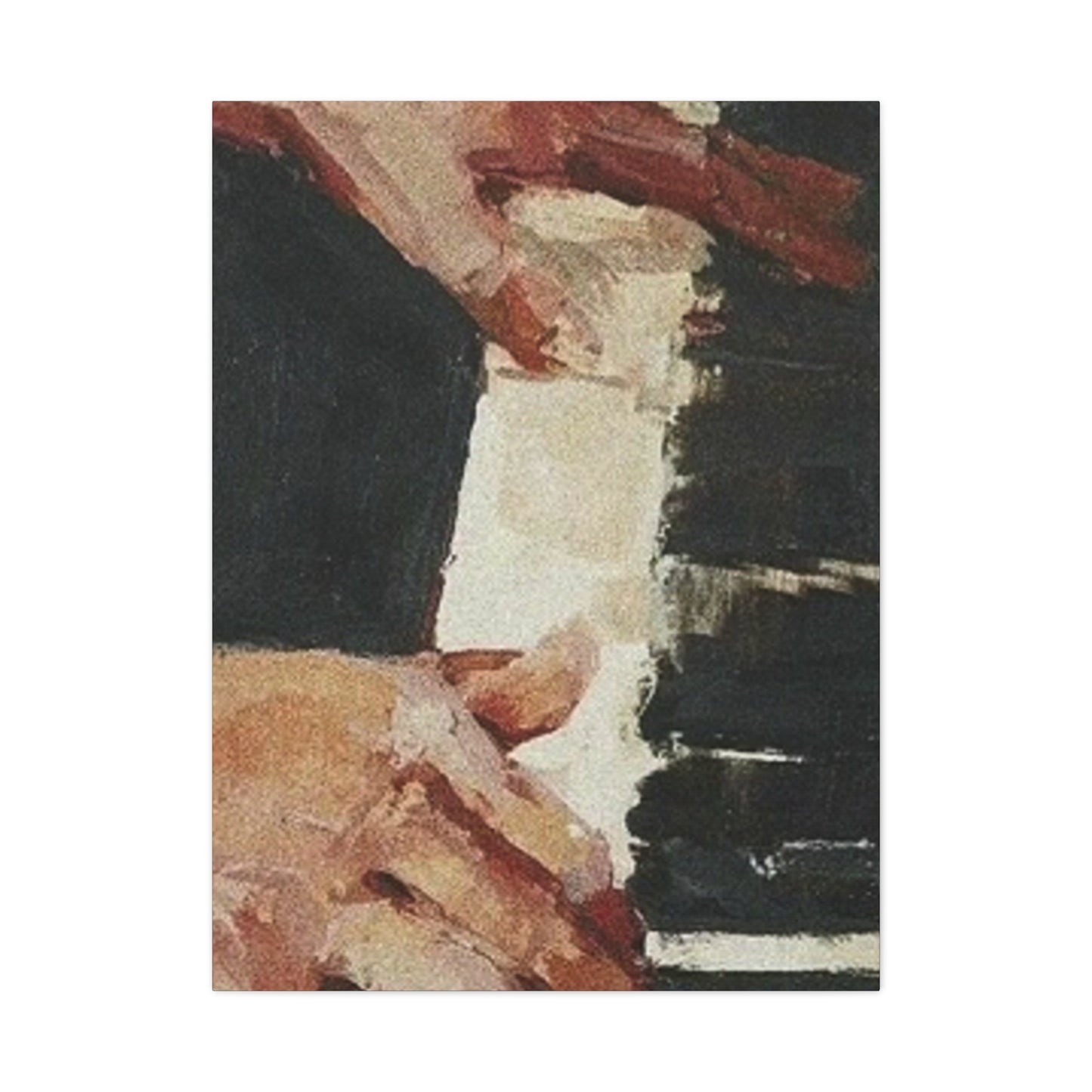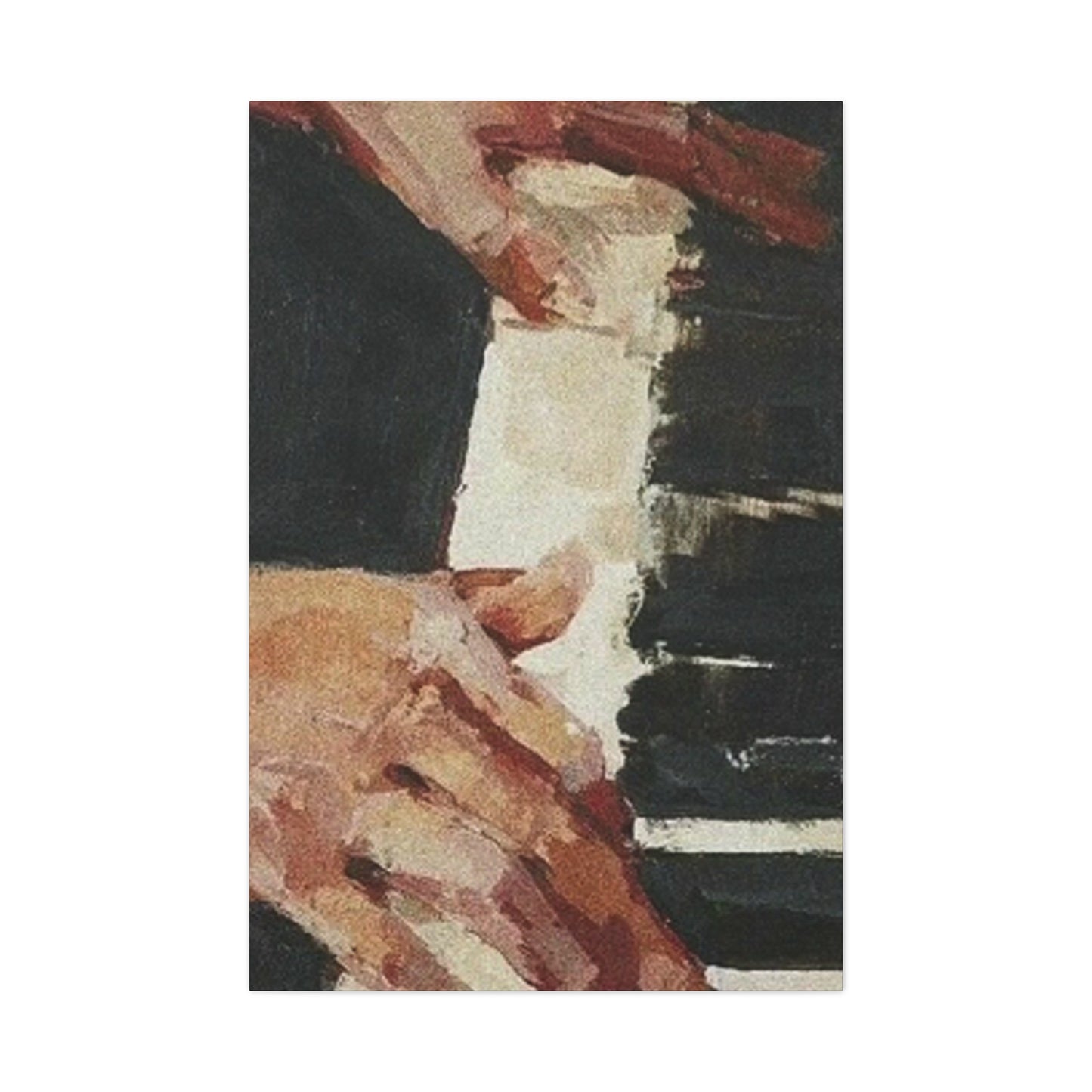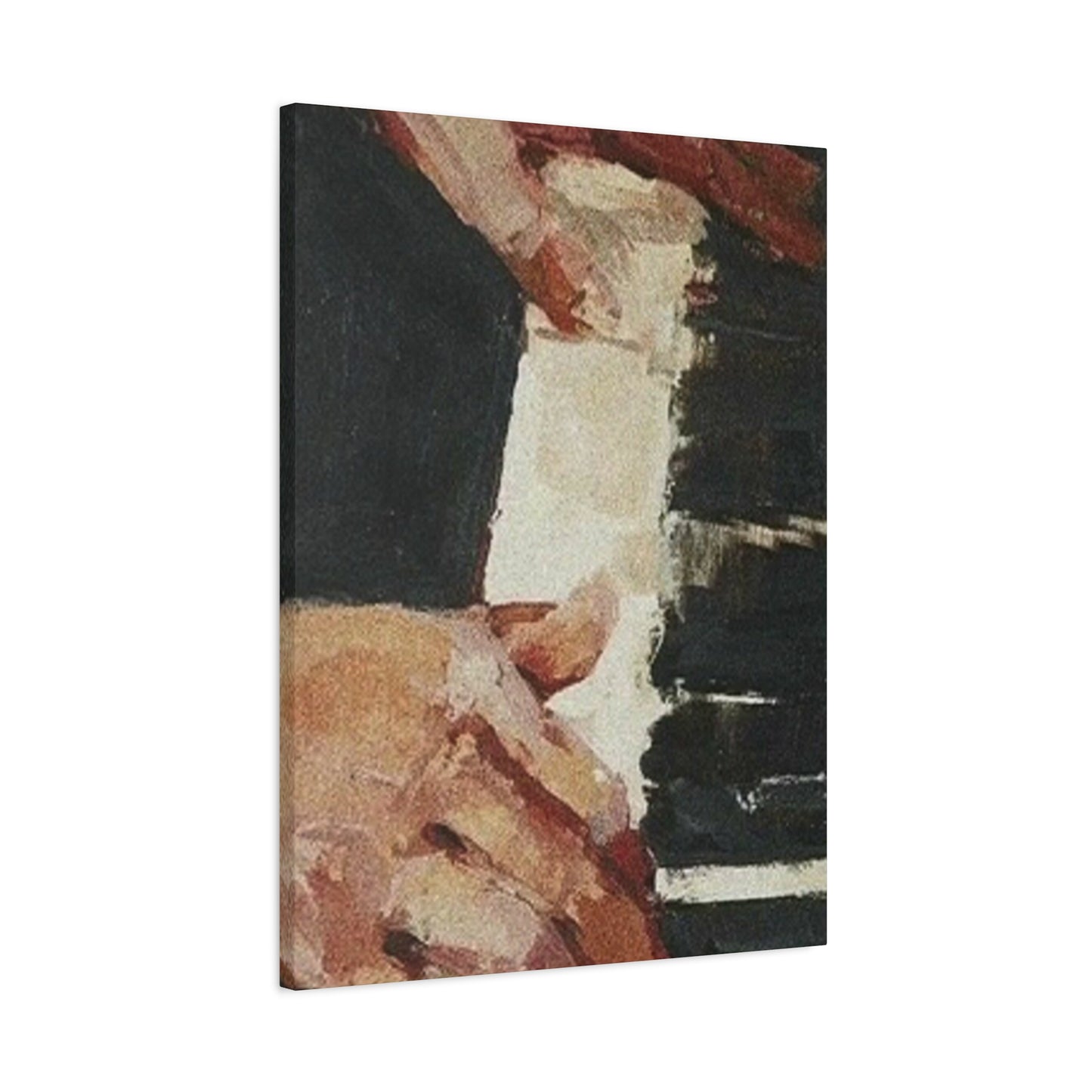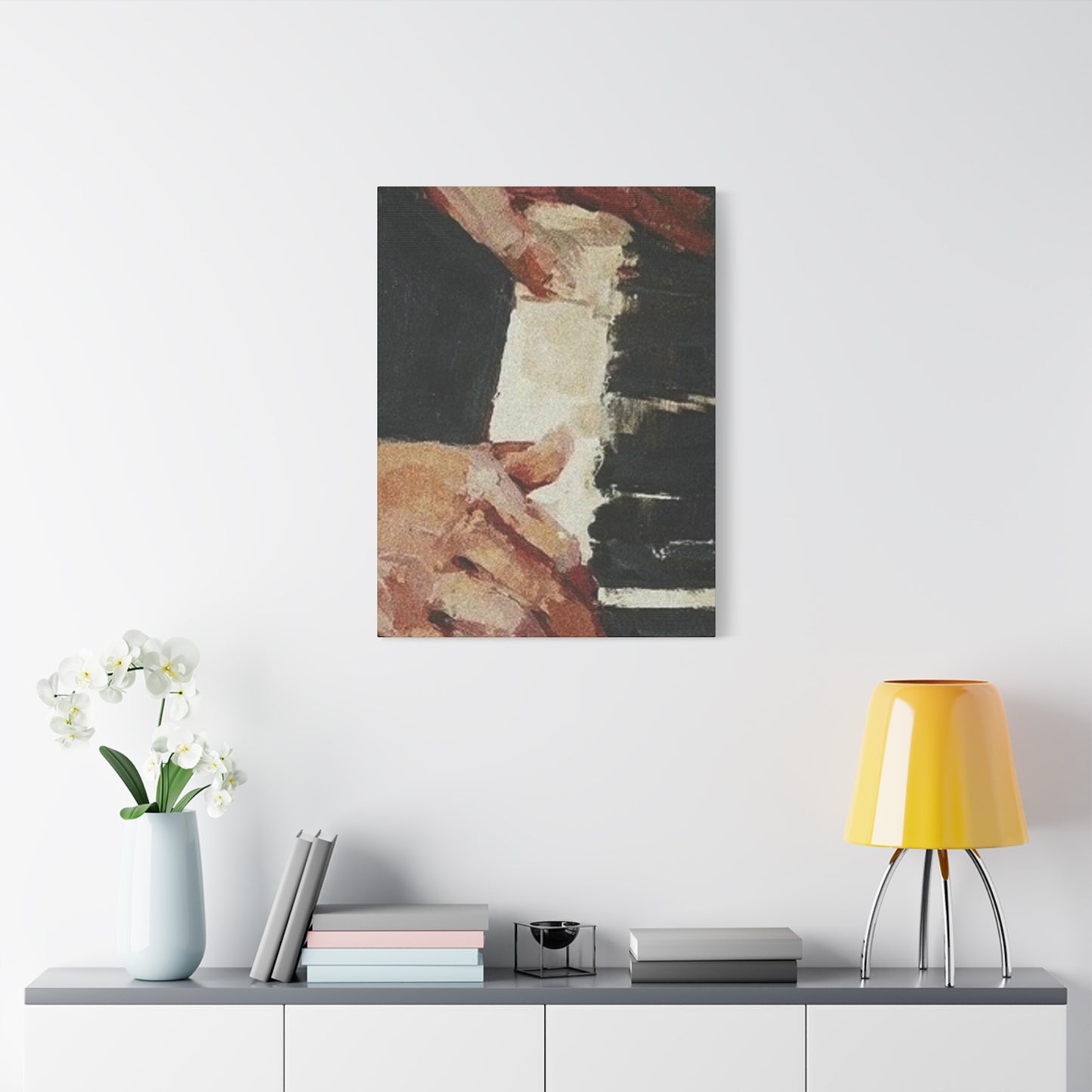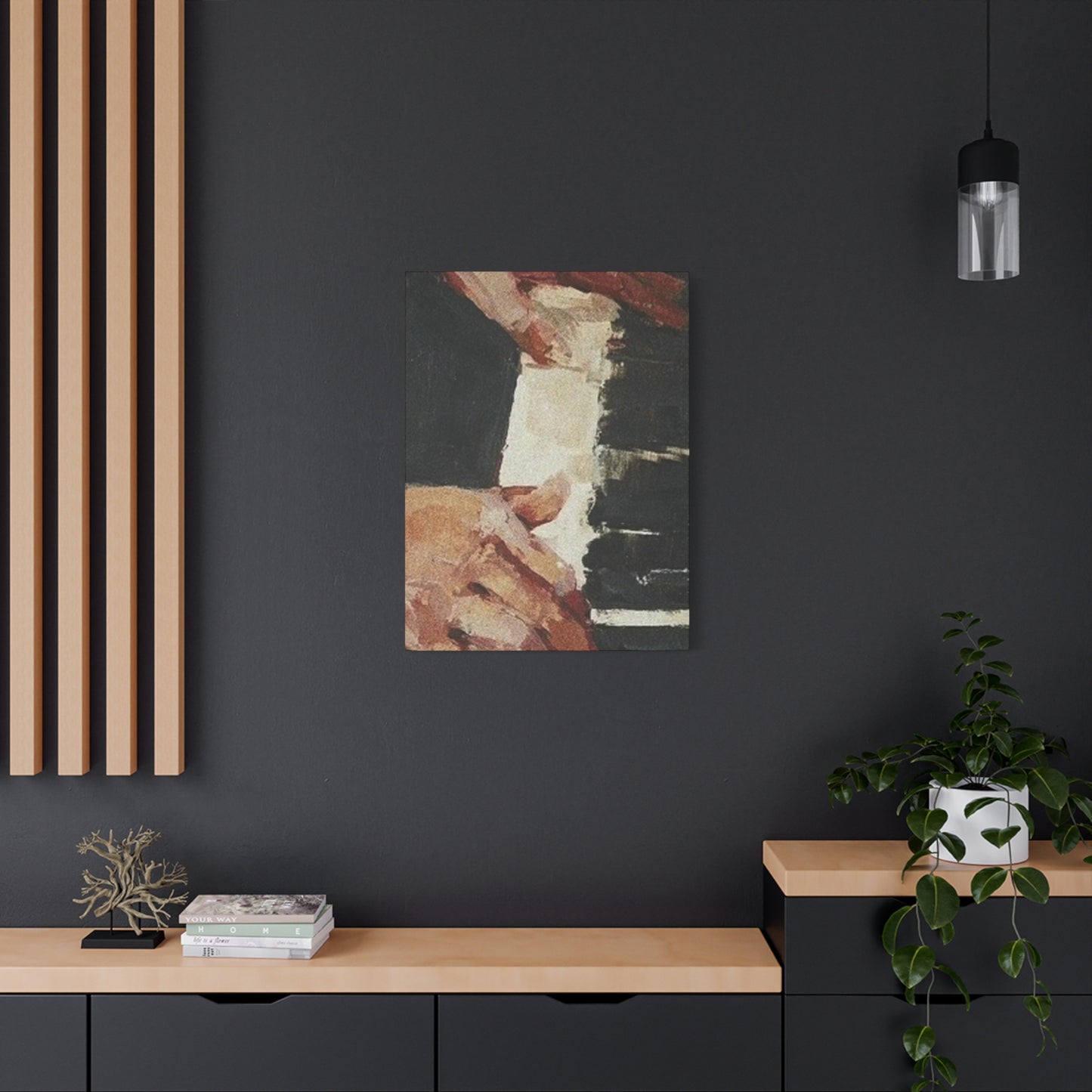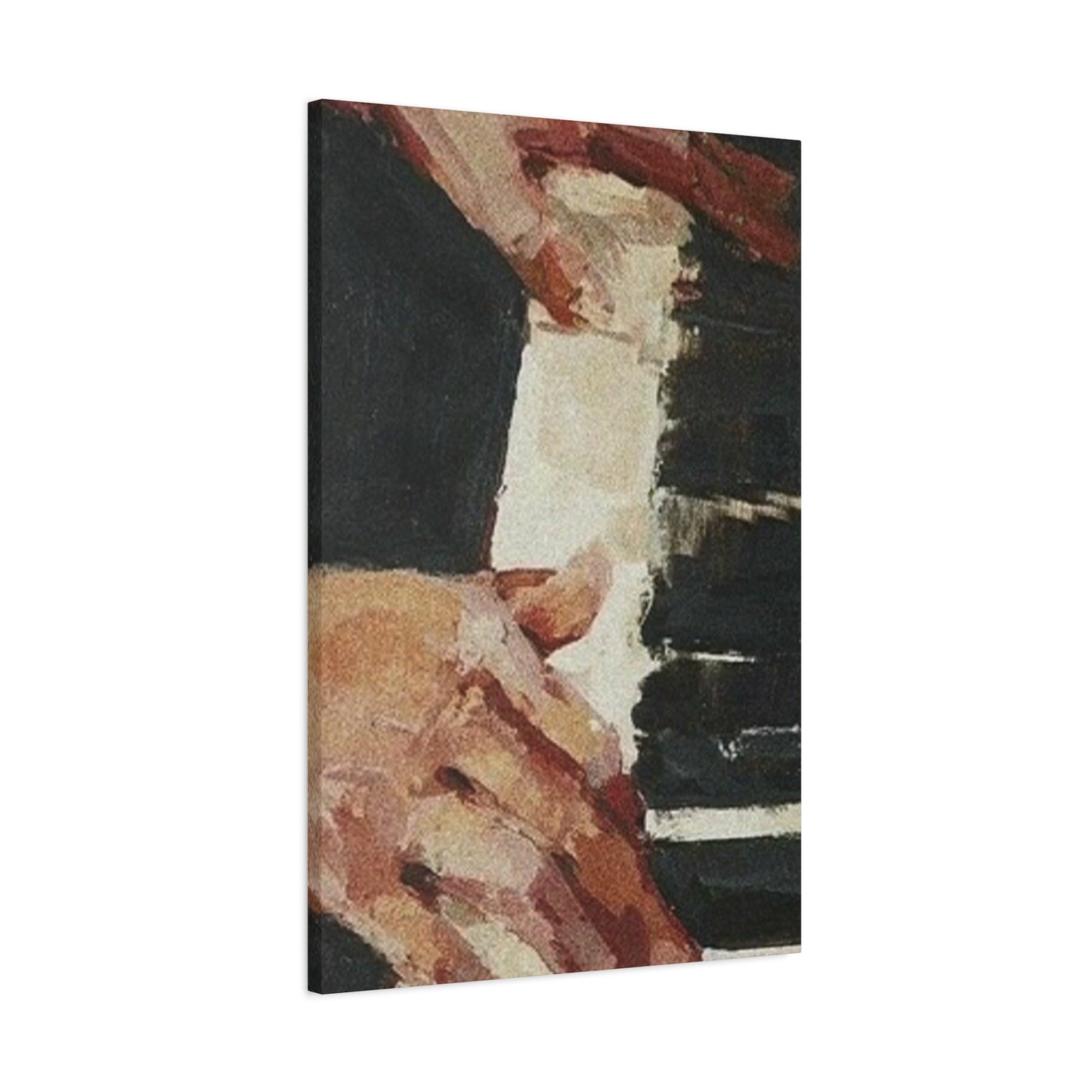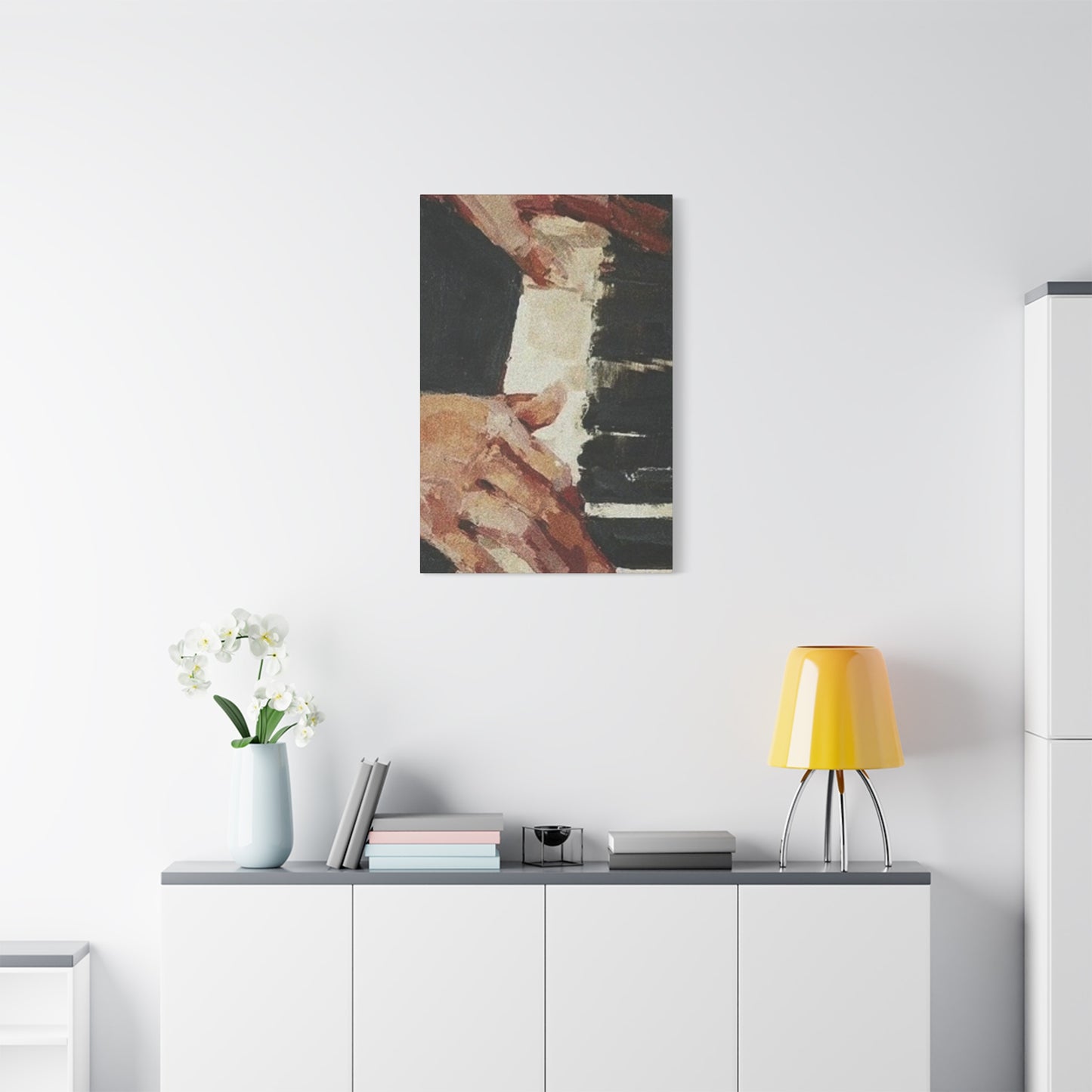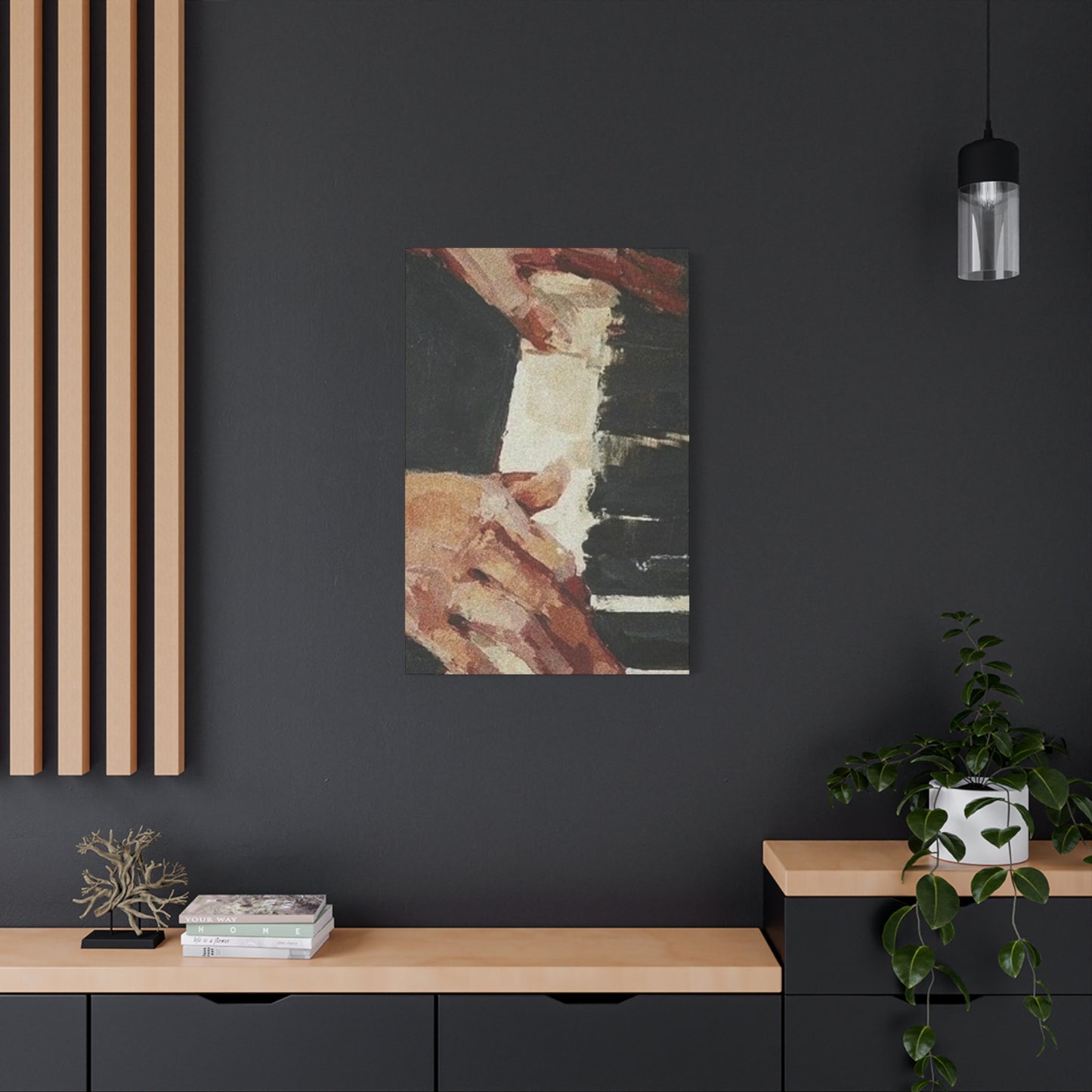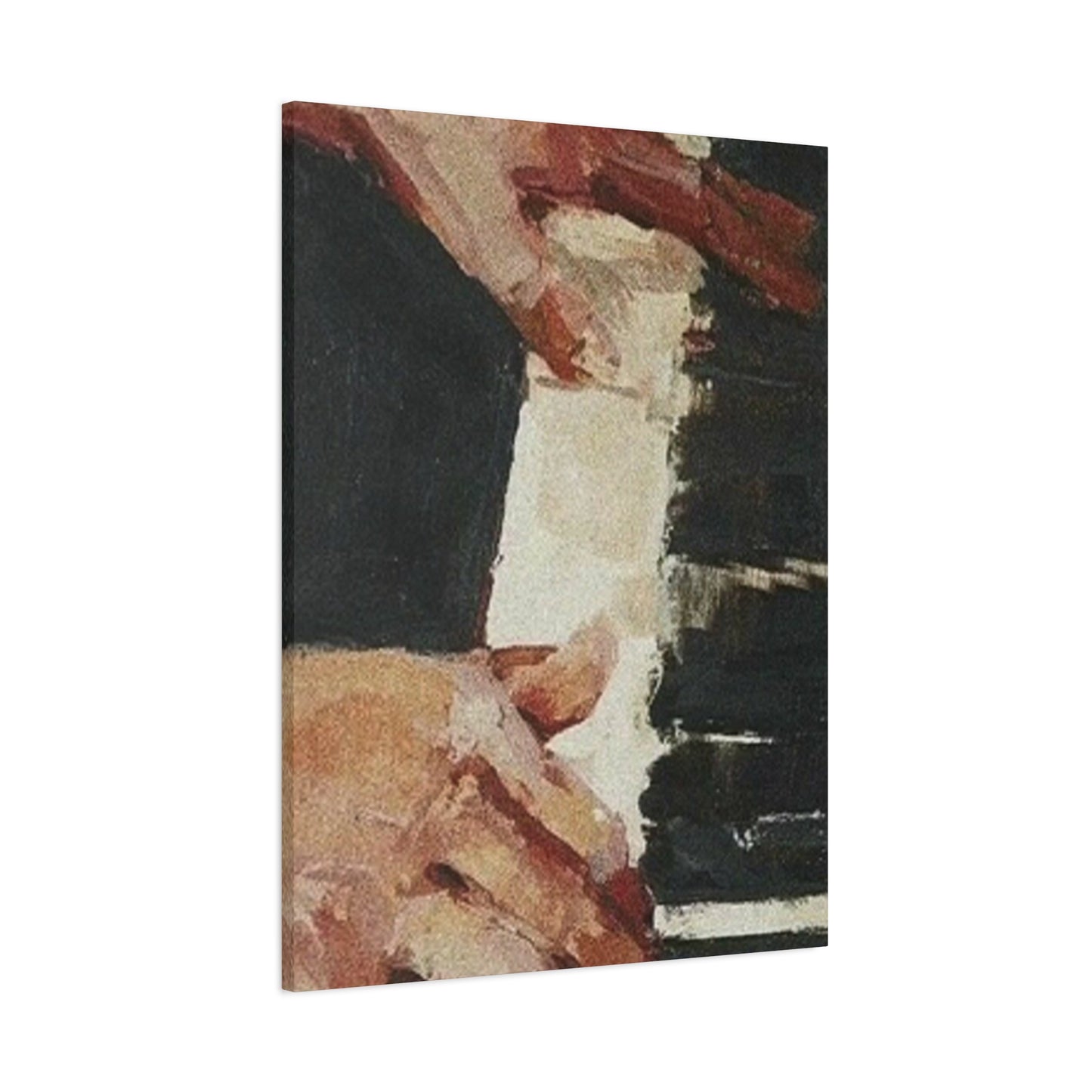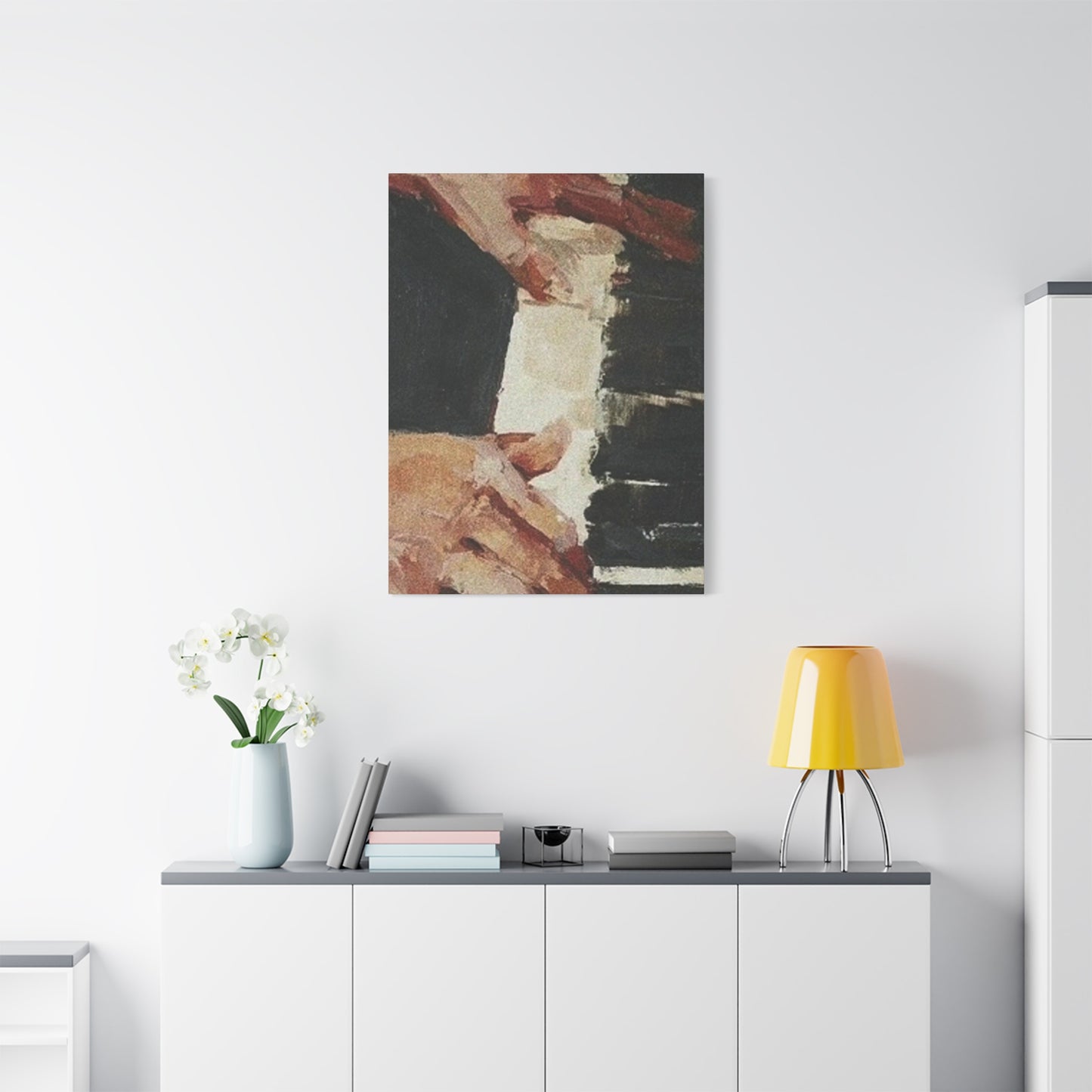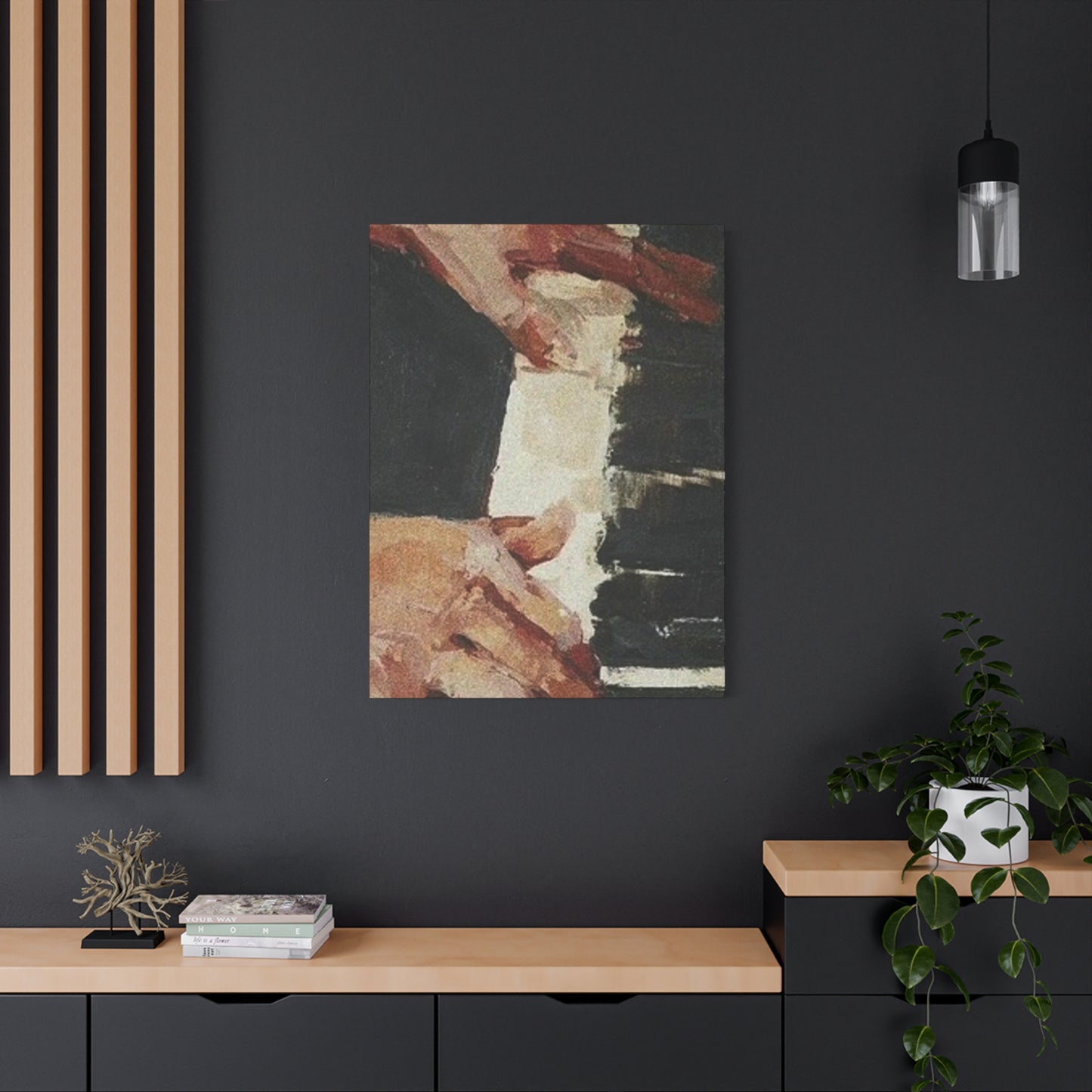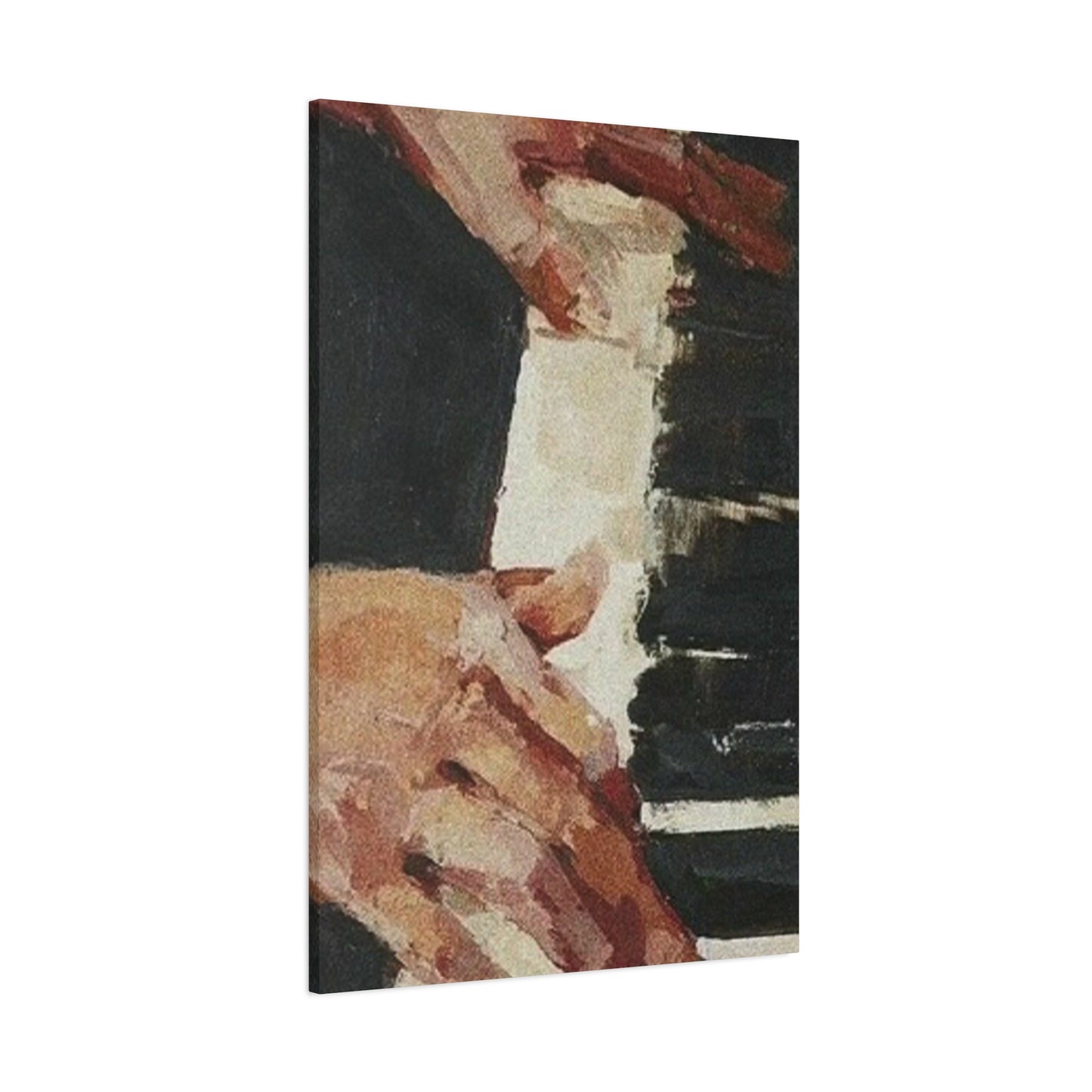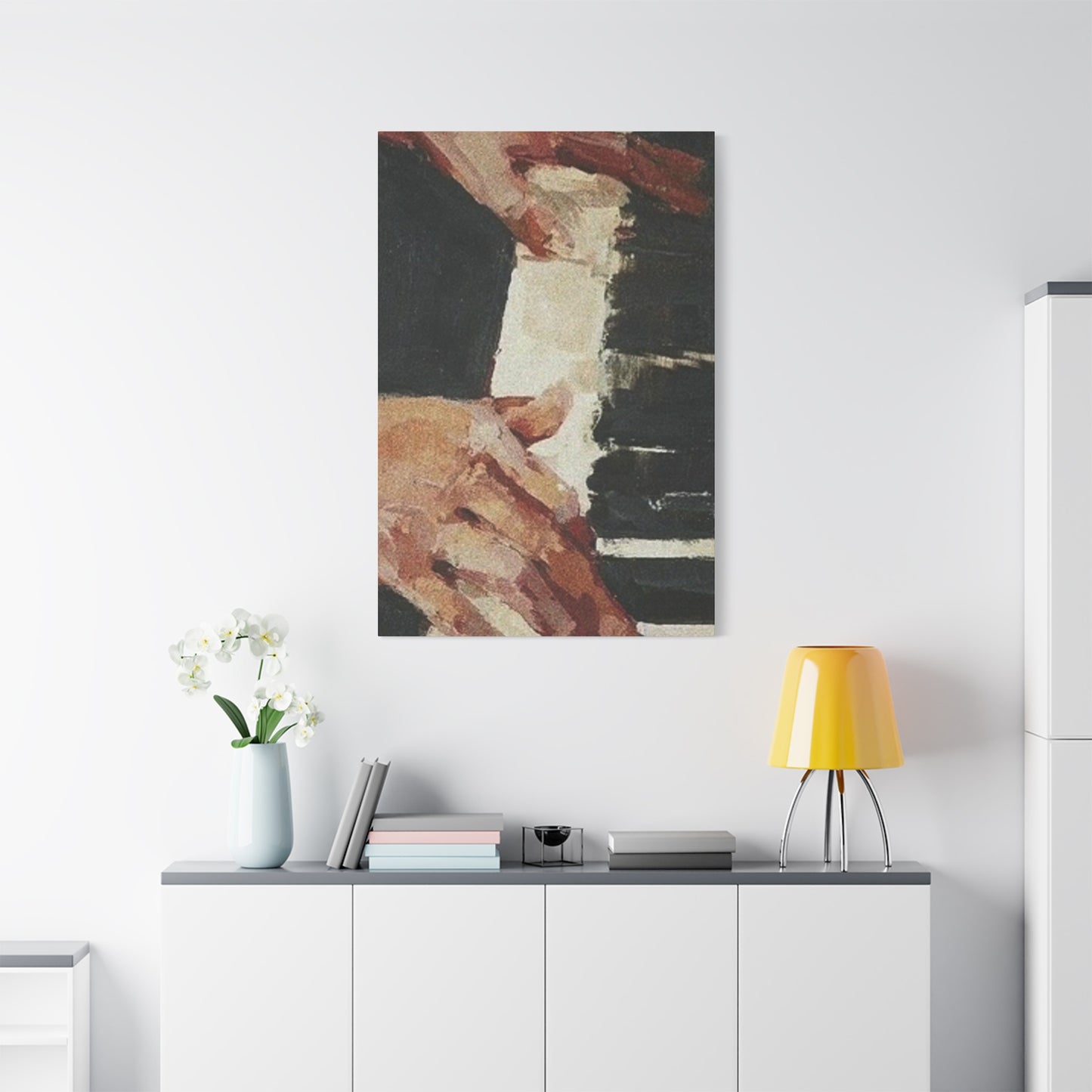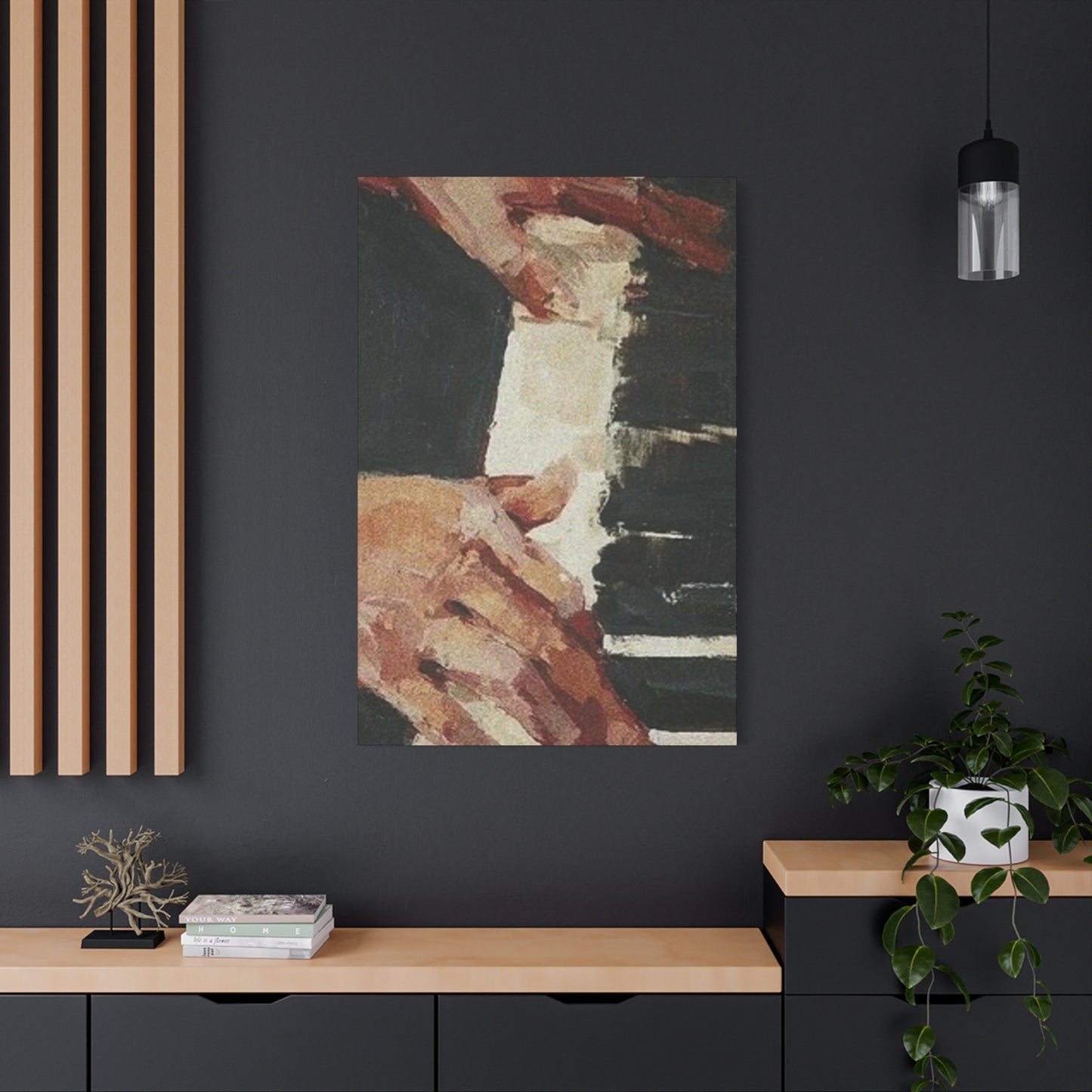Playing Piano Wall Art: A Tribute to Musical Passion and Creativity
The captivating world of piano hands wall art represents one of the most elegant forms of artistic expression, combining the grace of human movement with the timeless beauty of musical performance. These stunning visual pieces capture the essence of piano playing through detailed depictions of hands dancing across keyboard keys, creating artwork that resonates deeply with music lovers, artists, and anyone who appreciates the delicate balance between technical skill and emotional expression. The popularity of such artwork has grown tremendously as people seek to bring the sophistication and cultural richness of classical music into their living environments.
Piano hands artwork serves multiple purposes beyond mere decoration. It acts as a bridge between visual and auditory arts, allowing viewers to almost hear the melodies being played through the positioning of fingers and the suggested movement captured in each piece. The artistic representation of hands on piano keys tells stories of dedication, passion, and the countless hours spent perfecting musical craft. Whether displayed in homes, studios, or professional venues, these pieces create an atmosphere of refinement and cultural appreciation that speaks to the universal language of music.
The versatility of piano hands wall art makes it suitable for various settings and design preferences. From photorealistic renderings that showcase every detail of finger placement to abstract interpretations that focus on the emotional essence of musical performance, there exists a style to complement any aesthetic vision. The interplay between light and shadow often featured in these works adds depth and drama, while the monochromatic or richly colored palettes can either blend seamlessly with existing decor or serve as striking focal points that command attention.
Modern artists and photographers have embraced piano hands imagery as a subject that allows for endless creative interpretation. The combination of human anatomy, mechanical precision of piano keys, and the invisible element of music creates a unique artistic challenge that results in compelling visual narratives. These works often capture moments of intense concentration, gentle expression, or powerful performance, each telling its own story about the relationship between musician and instrument.
The emotional impact of piano hands wall art extends beyond its visual appeal. For musicians, these pieces serve as daily inspiration and reminders of their craft's beauty and complexity. For non-musicians, they offer a window into a world of discipline, creativity, and artistic achievement. The universal recognition of piano playing as a symbol of culture and education makes these artworks particularly meaningful in creating environments that value learning and artistic expression.
Essential Framing Techniques for Piano Hands Artwork
Proper framing transforms piano hands artwork from simple prints into sophisticated wall features that command respect and admiration. The framing process requires careful consideration of multiple factors, including the artwork's style, color palette, intended display location, and overall design goals. Professional framing not only protects the artwork but also enhances its visual impact and ensures its longevity as a treasured piece.
Selecting the appropriate frame material sets the foundation for successful presentation. Wood frames offer warmth and traditional appeal, particularly when showcasing classical or vintage-style piano hands artwork. Cherry, walnut, and mahogany provide rich tones that complement the sophisticated nature of musical imagery, while lighter woods like maple or birch create a more contemporary feel. Metal frames, particularly in silver, gold, or black finishes, lend themselves well to modern and abstract interpretations of piano hands, creating clean lines that focus attention on the artwork itself.
The relationship between frame width and artwork size demands careful balance. Oversized frames can overwhelm delicate piano hands imagery, while frames that are too narrow may fail to provide adequate visual weight for larger pieces. As a general guideline, frames measuring between two to four inches in width work well for most piano hands artwork, with adjustments made based on the piece's scale and intended display prominence. The frame's profile, whether simple and clean or ornate and decorative, should reflect both the artwork's character and the surrounding environment's aesthetic.
Matting decisions significantly influence the final presentation quality. Single mats in neutral tones like cream, off-white, or light gray allow piano hands artwork to take center stage without competing colors or patterns. Double matting adds sophistication and depth, with the inner mat often chosen to complement a color present in the artwork while the outer mat maintains neutrality. The mat width typically ranges from two to four inches, with larger artwork accommodating wider mats that provide breathing room around the image.
Glass selection impacts both protection and viewing experience. Standard glass suffices for artwork displayed away from direct sunlight and high-traffic areas, while UV-filtering glass protects valuable pieces from harmful light exposure that can cause fading over time. Anti-reflective glass eliminates distracting reflections that can interfere with viewing, particularly important for detailed piano hands artwork where finger positioning and key relationships require clear visibility. Museum-quality glazing offers the highest level of protection for investment-grade pieces.
Conservation considerations become paramount for valuable or irreplaceable piano hands artwork. Acid-free materials throughout the framing process prevent deterioration caused by chemical interactions over time. Proper spacing between artwork and glass prevents moisture buildup and potential sticking, while archival mounting techniques ensure the piece can be safely removed for cleaning or relocation without damage. Professional framers understand these requirements and can provide guidance on appropriate conservation methods.
The interplay between lighting and framing affects how piano hands artwork appears in different conditions. Frames with deeper profiles create more dramatic shadows, adding visual interest but potentially reducing visibility in low-light conditions. Shallower frames maintain consistent visibility but may lack the dimensional impact desired for statement pieces. Consideration of the intended display location's lighting conditions helps inform framing choices that optimize the artwork's appearance throughout different times of day.
Custom framing allows for personalization that reflects individual preferences and specific display requirements. Musicians might incorporate elements from their own instruments, such as wood from a piano bench or small musical symbols integrated into the frame design. Photographers displaying their own piano hands captures might choose frames that complement their other work in a gallery wall arrangement. The investment in quality custom framing pays dividends in enhanced visual impact and long-term artwork preservation.
Installation considerations extend the framing process to include proper wall mounting and positioning. Professional installation ensures secure attachment that protects both artwork and surrounding surfaces. Proper height placement, typically with the artwork's center positioned at eye level (approximately 57 inches from the floor), optimizes viewing angles and creates pleasing visual relationships with surrounding elements. Multiple piece arrangements require careful planning to achieve balanced composition and appropriate spacing.
Abstract Interpretations of Musical Hand Movements
Abstract piano hands paintings represent some of the most emotionally evocative and visually striking artwork in the musical art genre. These pieces move beyond literal representation to capture the essence, energy, and emotional intensity of piano performance through color, movement, and gestural expression. Artists working in this style focus on conveying the feeling of music-making rather than documenting precise finger positions or keyboard details.
The color palettes used in abstract piano hands artwork often reflect the emotional content of music itself. Deep blues and purples might suggest the contemplative nature of nocturnes, while vibrant reds and oranges could represent the passion found in dramatic compositions. Artists frequently employ color gradients and blending techniques that mirror the way musical notes flow together, creating visual harmonies that parallel auditory ones. The absence of rigid boundaries between colors suggests the fluid nature of musical expression and the seamless transitions between notes and phrases.
Brushwork and mark-making in abstract piano hands paintings vary dramatically based on the intended emotional impact. Aggressive, bold strokes might represent powerful fortissimo passages, while delicate, subtle marks could suggest gentle pianissimo moments. Some artists incorporate techniques that create texture reminiscent of piano strings or keyboard surfaces, adding tactile elements that enhance the viewing experience. The direction and energy of brushstrokes often follow the implied movement of hands across keys, creating visual rhythms that echo musical ones.
Compositional approaches in abstract piano hands artwork challenge traditional perspective and representation. Multiple hand positions might be superimposed to suggest the passage of time or the complexity of advanced piano techniques. Fragmented or dissolved forms could represent the ethereal quality of music itself, while solid, defined shapes might anchor the composition in physical reality. The interplay between abstract and representational elements allows viewers to engage with the artwork on multiple levels.
Scale and proportion take on new meaning in abstract interpretations. Enlarged hand details might emphasize the importance of touch and technique in piano playing, while reduced or minimized keyboard representations could suggest the transcendence of physical limitations through musical expression. Artists often manipulate these relationships to create emotional impact and guide viewer attention to specific aspects of the piano-playing experience.
The integration of musical elements beyond hands and keys enriches abstract compositions. Flowing lines might represent melody, while rhythmic patterns in paint application could suggest tempo and beat. Some artists incorporate actual musical notation as design elements, creating layers of meaning that reward closer examination. These additions create artwork that speaks to both visual and musical sensibilities simultaneously.
Texture application in abstract piano hands artwork adds dimensional interest that engages multiple senses. Impasto techniques create raised surfaces that suggest the physical presence of hands and the tactile nature of piano keys. Smooth, blended areas might represent the seamless flow of musical phrases, while rough, broken textures could indicate technical challenges or emotional turbulence. The contrast between different textural approaches within a single piece creates visual interest and emotional depth.
Movement representation becomes crucial in abstract piano hands artwork, as static images must convey the dynamic nature of musical performance. Artists employ various techniques to suggest motion, including directional brushstrokes, blurred edges, and multiple exposure effects. The challenge lies in making viewers feel the rhythm and flow of music through purely visual means, requiring sophisticated understanding of both artistic technique and musical expression.
Color symbolism in abstract piano hands artwork draws from both traditional art theory and musical associations. Warm colors might represent emotional expression and passion, while cool colors suggest technical precision and intellectual approach. The balance between warm and cool elements within a composition can reflect the duality present in great musical performances, where technical skill serves emotional expression. Artists often develop personal color vocabularies that consistently represent specific musical concepts across multiple works.
The viewer's role in interpreting abstract piano hands artwork becomes more active and personal compared to realistic representations. Without literal details to guide understanding, viewers must engage their own musical experiences and emotional responses to find meaning in the work. This interactive aspect makes abstract pieces particularly effective in creating personal connections between artwork and observer, as each person's interpretation reflects their own relationship with music and artistic expression.
Discovering Quality Sources for Musical Artwork
Finding exceptional piano hands wall art requires knowledge of various sources, from traditional galleries to contemporary online platforms, each offering unique advantages and selection characteristics. The search for perfect musical artwork begins with understanding where different types of pieces are most likely to be found and how to evaluate quality and authenticity across various purchasing channels.
Art galleries specializing in music-themed artwork provide curated selections that have undergone professional evaluation for quality and artistic merit. These venues often feature works by established artists who have developed reputations for musical subject matter, ensuring that purchases represent investment-quality pieces with potential for appreciation. Gallery staff possess expertise in musical art history and can provide valuable context about specific pieces, artists' backgrounds, and the cultural significance of particular works. The gallery environment allows for proper viewing conditions and size assessment that online shopping cannot replicate.
Online marketplaces have revolutionized access to piano hands artwork, connecting buyers with artists worldwide and offering unprecedented selection variety. Established platforms provide buyer protection policies, detailed artwork descriptions, and high-resolution images that facilitate informed decision-making. Customer reviews and artist profiles help establish credibility and quality expectations, while secure payment systems protect financial transactions. The convenience of browsing extensive collections from home appeals to many buyers, though the inability to see pieces in person remains a significant limitation.
Artist studios and workshops offer direct access to creators and their work, providing opportunities for custom commissions and personal connections with the artistic process. Studio visits allow buyers to see multiple works, understand the artist's development and technique, and potentially acquire pieces before they reach broader market availability. Many artists welcome studio visitors and enjoy discussing their work, providing insights that enhance appreciation and understanding of specific pieces. Commission possibilities enable buyers to request specific sizes, color schemes, or interpretations tailored to their needs.
Art fairs and exhibitions showcase multiple artists and galleries in single locations, creating efficient browsing opportunities for serious collectors and casual buyers alike. These events often feature special pricing and first-look privileges for new works, while the competitive environment encourages exhibitors to present their finest pieces. Educational components, such as artist talks and demonstrations, add value beyond simple purchasing opportunities. The social aspect of art fairs creates networking opportunities with other collectors and art professionals.
Auction houses occasionally feature musical artwork, including piano hands pieces, particularly when selling estates of musicians or music enthusiasts. These venues can offer exceptional works at competitive prices, though bidding processes require preparation and strategy. Auction previews allow for careful examination of pieces, while auction house expertise provides authentication and condition assessment. The competitive nature of auctions can drive prices beyond initial estimates, requiring predetermined spending limits and disciplined bidding approaches.
Print-on-demand services cater to buyers seeking affordability and customization options for piano hands artwork. These platforms allow selection of specific sizes, paper types, and framing options while maintaining relatively low costs compared to original artwork. Quality varies significantly among providers, making research and sample ordering advisable before major purchases. While these pieces lack the uniqueness and investment potential of original works, they serve well for decorative purposes and temporary displays.
Museum gift shops offer reproductions of notable piano hands artwork from their collections, providing access to famous pieces at reasonable prices. The institutional backing ensures quality reproduction standards and accurate color representation. Limited edition prints from museum collections often include documentation and certificates that add value and authenticity. These purchases also support museum operations and educational programming, adding philanthropic value to the transaction.
Local art schools and universities frequently host student and faculty exhibitions featuring musical artwork, including piano hands themes. These venues offer opportunities to discover emerging talent at accessible price points while supporting arts education. Faculty works often represent high technical and artistic standards, while student pieces might offer fresh perspectives and experimental approaches. Building relationships with academic art programs can provide ongoing access to new works and developing artists.
Specialty framing shops sometimes display artwork available for purchase, often featuring pieces that complement their framing services. These venues understand presentation requirements and can offer complete solutions including artwork, framing, and installation services. Staff expertise in display techniques helps buyers make informed decisions about how pieces will appear in their intended locations. The combination of artwork sales and professional services creates convenient one-stop shopping experiences.
Social media platforms increasingly serve as discovery tools for artists and their work, allowing direct communication between creators and buyers. Instagram and other visual platforms enable artists to showcase their portfolio and process, while hashtags facilitate discovery of specific themes like piano hands artwork. Direct messaging capabilities allow for price inquiries and commission discussions without intermediary involvement. However, buyers must exercise caution regarding authenticity and quality when purchasing through social media channels.
Piano Hands Artwork as Meaningful Musical Gifts
Piano hands wall art represents one of the most thoughtful and personally meaningful gifts for musicians, music students, and music lovers, combining visual beauty with deep understanding of the recipient's passion for musical expression. These gifts demonstrate recognition of the recipient's dedication to their craft and provide lasting reminders of music's importance in their lives. The selection process requires consideration of the recipient's musical background, artistic preferences, and display environment to ensure the gift achieves maximum impact and appreciation.
Professional musicians often treasure piano hands artwork that reflects their performance experience and technical understanding of the instrument. Realistic pieces showing proper hand position and finger technique resonate with recipients who understand the subtleties being depicted, while abstract interpretations might appeal to those who value emotional expression over technical accuracy. Consider the recipient's musical style when selecting artwork, as classical musicians might prefer traditional representations while contemporary performers might gravitate toward modern or experimental approaches.
Music students benefit from piano hands artwork that serves both inspirational and educational purposes. Pieces showing correct hand posture and finger placement can reinforce proper technique, while artistically beautiful representations inspire continued practice and dedication. Parents of young musicians often find these gifts particularly meaningful, as they demonstrate support for their child's musical education and create visual reminders of practice goals. The artwork grows in meaning as the student progresses, serving as a constant reminder of their musical journey.
Music teachers appreciate piano hands artwork for both personal enjoyment and professional use. Studio displays of such artwork create inspiring environments for lessons and demonstrate the teacher's passion for music to students and parents. Pieces that show various hand positions or techniques can serve as visual teaching aids, while beautiful artistic representations create an atmosphere that elevates the educational experience. Custom pieces incorporating the teacher's name or studio information add professional polish to their teaching environment.
Music lovers without performance background still connect deeply with piano hands artwork, as these pieces represent the beauty and complexity of musical expression they admire in others. The visual representation of musical skill and artistry appeals to those who appreciate music but may not possess the technical ability to create it themselves. These gifts acknowledge the recipient's musical appreciation and provide a way to display their passion for music in their living environment.
Retirement gifts for music educators or professional musicians take on special significance when featuring piano hands artwork. These pieces serve as lasting tributes to careers spent in musical service, providing beautiful reminders of the joy and fulfillment found in music-making. Commissioning custom pieces that incorporate elements specific to the retiree's career, such as particular musical styles or personal performance history, creates uniquely meaningful gifts that honor their professional dedication.
Wedding gifts for musician couples or music-loving partners create romantic connections between visual art and shared musical interests. Piano hands artwork symbolizes the harmony and coordination required in both musical performance and successful relationships, making metaphorical connections that enhance the gift's meaning. Pieces suitable for display in shared living areas help couples incorporate their musical interests into their domestic environment.
Anniversary gifts gain special meaning when they acknowledge long-term commitment to musical study or performance. Milestone celebrations, such as decades of piano study or years of professional performance, deserve commemoration through artwork that reflects the significance of these achievements. The permanence of wall art parallels the lasting nature of musical skill and knowledge, creating appropriate symbols for anniversary recognition.
Holiday gifts featuring piano hands artwork offer opportunities to surprise music lovers with unexpected presents that show thoughtfulness and understanding of their interests. The universal appeal of music makes these gifts appropriate across different cultural and religious traditions, while the sophisticated nature of musical art ensures they will be well-received by recipients of various ages and backgrounds. The timing of holiday gifts allows for special presentation and ceremony that enhances the giving experience.
Graduation gifts for music students transitioning between educational levels or entering professional careers carry particular significance when featuring piano hands artwork. These pieces serve as bridges between past achievements and future aspirations, acknowledging completed studies while inspiring continued musical growth. The professional appearance of quality artwork helps graduates establish sophisticated living and working environments appropriate to their new status.
Sympathy gifts for grieving music lovers provide comfort through beautiful representations of musical expression and the enduring nature of artistic beauty. Piano hands artwork suggests the continuation of musical traditions and the lasting impact of musical dedication, offering solace to those who have lost musical colleagues, teachers, or family members. The quiet dignity of well-chosen pieces creates appropriate memorial tributes that honor musical relationships and shared experiences.
Corporate gifts for music-related businesses, schools, or organizations demonstrate understanding of their mission and values. Piano hands artwork in professional settings creates impressive displays that reflect organizational commitment to musical excellence and artistic appreciation. These gifts often serve long-term promotional purposes while providing genuine artistic value to recipient organizations.
Vintage and Classical Piano Hands Artwork
Vintage piano hands wall art captures the timeless elegance and historical significance of classical piano performance, offering viewers connections to musical traditions spanning centuries. These pieces often reflect the artistic styles and cultural values of their creation periods, providing windows into how different eras perceived and celebrated musical expression. The enduring appeal of vintage piano hands artwork lies in its combination of historical authenticity, artistic craftsmanship, and universal musical themes that transcend temporal boundaries.
Historical context enriches the appreciation of vintage piano hands artwork, as these pieces document evolving relationships between society and musical performance. Victorian-era representations often emphasize the propriety and refinement associated with piano playing, particularly for women of social standing who were expected to demonstrate musical accomplishment as part of their education. The formal poses and elegant settings depicted in these works reflect cultural attitudes toward music as both entertainment and moral improvement.
Artistic techniques employed in vintage piano hands artwork demonstrate the craftsmanship standards and material preferences of earlier periods. Oil paintings from the 18th and 19th centuries showcase masterful use of light and shadow to create dimensional realism, while the rich color palettes reflect available pigments and artistic conventions of their times. Watercolor studies often served as preparatory works or intimate personal pieces, displaying looser, more expressive approaches to the subject matter. Print techniques, including lithography and engraving, made musical imagery accessible to broader audiences while maintaining artistic quality.
The evolution of piano design influences how vintage piano hands artwork depicts the instrument and its interaction with performers. Early fortepiano representations show different key proportions and hand positions compared to modern grand piano depictions, while the varying sizes and styles of historical instruments create diverse compositional opportunities for artists. These technical differences provide educational value for modern viewers interested in keyboard instrument development and historical performance practices.
Provenance and authenticity considerations become crucial when collecting vintage piano hands artwork, as the passage of time can obscure original attribution and condition. Professional appraisal helps establish artwork value and historical significance, while conservation assessment determines preservation needs and restoration requirements. Documentation of previous ownership, exhibition history, and publication records adds to pieces' scholarly and monetary value. Buyers must develop expertise in recognizing period-appropriate materials, techniques, and stylistic characteristics to avoid modern reproductions marketed as vintage originals.
Conservation challenges specific to vintage piano hands artwork include addressing age-related deterioration while preserving historical integrity. Canvas degradation, paint layer instability, and varnish discoloration require specialized treatment by conservators familiar with period materials and techniques. Environmental factors, including light exposure, humidity fluctuation, and atmospheric pollution, continue to threaten these works even after acquisition. Proper storage and display conditions become essential for maintaining these pieces for future generations.
The market for vintage piano hands artwork reflects broader trends in art collecting and musical appreciation. Established auction houses regularly feature such pieces, while specialized dealers develop expertise in musical art history and market dynamics. Pricing factors include artist recognition, historical significance, condition, and documented provenance, with rare or exceptional pieces commanding premium values. Collectors often focus on specific periods, artists, or regional styles, developing expertise that guides future acquisitions.
Reproduction and adaptation of vintage piano hands artwork serves multiple contemporary purposes while raising questions about authenticity and artistic integrity. High-quality prints allow broader access to historically significant imagery, while digital reproduction enables detailed study and educational use. Contemporary artists sometimes create works inspired by vintage pieces, combining historical references with modern perspectives and techniques. The balance between honoring historical sources and creating original contemporary work requires careful consideration of artistic intent and market positioning.
Display considerations for vintage piano hands artwork often involve creating appropriate historical context while ensuring pieces integrate successfully with contemporary environments. Period-appropriate frames and matting materials enhance historical authenticity, while museum-quality lighting protects sensitive materials from damage. Gallery walls dedicated to vintage pieces can create immersive historical experiences, while single pieces might serve as focal points in otherwise modern settings. The challenge lies in respecting the artwork's historical character while making it accessible and relevant to contemporary viewers.
Educational value inherent in vintage piano hands artwork extends beyond aesthetic appreciation to include lessons in art history, musical history, and cultural development. These pieces document changing social attitudes toward music education, performance practices, and artistic representation across different historical periods. Museums and educational institutions use such artwork to illustrate broader cultural themes, while private collectors often enjoy researching and sharing the stories behind their pieces. The intersection of visual art and musical history creates rich opportunities for interdisciplinary study and appreciation.
The influence of vintage piano hands artwork on contemporary artistic production demonstrates the enduring appeal of classical musical imagery. Modern artists often reference historical pieces in their own work, creating dialogue between past and present artistic traditions. The technical challenges and aesthetic goals established by historical masters continue to inspire contemporary creators, while the subject matter remains relevant to current musical culture. This continuity connects contemporary viewers with centuries of artistic and musical tradition.
Harmonizing Piano Art with Musical Note Decorations
The strategic combination of piano hands artwork with musical notation decorations creates cohesive and sophisticated environments that celebrate musical culture through complementary visual elements. This approach transforms ordinary rooms into immersive musical experiences that speak to both performers and enthusiasts, while demonstrating thoughtful design planning and cultural appreciation. Success in combining these elements requires understanding how different visual components interact and support each other within overall design schemes.
Scale relationships between piano hands artwork and musical notation decorations demand careful consideration to achieve balanced visual compositions. Large piano hands pieces typically require proportionally sized musical elements to avoid overwhelming smaller decorative components, while collections of smaller hands artwork might benefit from more delicate notation accents. The visual weight of each element affects how the eye moves through the arrangement, with properly balanced compositions creating pleasant viewing experiences that encourage longer contemplation.
Color coordination between piano hands artwork and musical notation decorations enhances unity while allowing individual elements to maintain their distinct character. Monochromatic schemes using blacks, whites, and grays echo traditional printed music while providing sophisticated neutral backgrounds that work with various furnishing choices. Selective color introductions through notation elements can complement specific colors present in piano hands artwork, creating subtle connections that reward careful observation. The interplay between warm and cool tones within the combined elements adds depth and visual interest to the overall arrangement.
Placement strategies for combining these elements require understanding of sight lines, natural focal points, and room function. Piano hands artwork typically serves as primary visual anchors, with musical notation decorations providing supporting elements that enhance rather than compete with the main pieces. Vertical arrangements along walls can create gallery-like experiences, while horizontal groupings above furniture pieces provide cohesive backgrounds for functional areas. The three-dimensional aspect of rooms allows for layering elements at different depths, creating visual complexity without cluttering.
The integration of actual sheet music as decorative elements adds authenticity and personal meaning to piano hands artwork displays. Framed pages from favorite compositions create intimate connections for musicians, while historically significant or beautiful manuscript pages appeal to broader audiences. The text and notation content should complement rather than distract from accompanying artwork, requiring careful selection and positioning. Conservation considerations apply to valuable sheet music, necessitating appropriate framing and environmental control.
Lighting design becomes crucial when combining multiple visual elements, as different components may have varying requirements for optimal presentation. Piano hands artwork typically benefits from focused lighting that emphasizes dimensional qualities and color richness, while delicate notation decorations might require gentler illumination to prevent glare on glass or paper surfaces. Layered lighting approaches allow for adjustment based on different viewing purposes, from detailed examination to ambient appreciation. The interplay of light and shadow across combined elements adds dramatic interest and temporal variation.
Thematic coherence emerges through careful selection of notation decorations that relate meaningfully to piano hands artwork content. Classical notation complements formal, realistic piano hands paintings, while contemporary or experimental notation might pair better with abstract interpretations. The musical content represented in notation decorations can echo or contrast with the emotional tone suggested by hands artwork, creating dialogue between visual elements. Personal connections, such as including notation from pieces the viewer plays or teaches, enhance the meaningful nature of the combined display.
The incorporation of three-dimensional musical elements, such as vintage metronomes, small musical instruments, or sculptural notation forms, adds textural interest to predominantly two-dimensional arrangements. These objects provide tactile qualities that invite closer examination and create opportunities for interesting shadow play and spatial relationships. Careful selection ensures that three-dimensional elements enhance rather than overwhelm the primary artwork, maintaining focus while adding depth and interest.
Seasonal and temporal variations in notation decorations allow for changing displays that maintain freshness while preserving core piano hands artwork installations. Holiday-themed musical selections, seasonal compositions, or pieces marking important musical anniversaries can rotate through the arrangement, providing ongoing interest and relevance. This approach acknowledges the temporal nature of music while maintaining stable visual anchors through permanent artwork pieces.
The educational potential of combined piano hands artwork and notation decorations creates opportunities for learning and musical development, particularly in homes with music students or educational institutions. Notation selections can reinforce technical concepts being studied, while the visual representation of hands demonstrates proper technique and musical expression. Teachers might use such displays as informal teaching tools, encouraging students to examine the relationship between written music and physical performance.
Professional environments, including music schools, studios, and performance venues, benefit from coordinated piano hands artwork and notation decorations that reinforce institutional missions and create inspiring atmospheres. These displays demonstrate commitment to musical excellence while providing visual interest for students, faculty, and visitors. The professional presentation of musical imagery enhances institutional credibility and creates environments conducive to serious musical study and performance.
Vibrant Color Palettes in Piano Hands Paintings
Colorful piano hands paintings represent dynamic and emotionally expressive interpretations of musical performance, using vibrant palettes to convey the passion, energy, and emotional depth inherent in piano playing. These artworks move beyond traditional monochromatic approaches to embrace color as a fundamental element of musical expression, creating pieces that resonate visually with the emotional content of music itself. The strategic use of color transforms piano hands imagery from simple documentation into powerful artistic statements that engage viewers on both intellectual and emotional levels.
Color psychology plays a significant role in how viewers respond to vibrant piano hands paintings, as different hues evoke specific emotional and psychological responses that can enhance or modify the perceived musical content. Warm colors like reds, oranges, and yellows suggest passion, energy, and excitement, making them appropriate for representing powerful musical passages or energetic performances. Cool colors such as blues, greens, and purples convey tranquility, introspection, and depth, working well for contemplative musical moments or technical precision. The interaction between warm and cool colors within single compositions creates dynamic tension that mirrors the complexity of musical expression.
Artistic techniques for applying color in piano hands paintings vary dramatically based on intended emotional impact and stylistic approach. Impressionistic methods using broken color and visible brushstrokes create sense of movement and spontaneity that echoes live musical performance, while smooth, blended applications might suggest the seamless flow of well-practiced technique. Layering transparent colors creates depth and complexity similar to musical harmonies, where multiple elements combine to create richer overall effects. The physical properties of different paint types, from oils to acrylics to watercolors, offer distinct possibilities for color interaction and visual texture.
Symbolic color associations in piano hands paintings can reference specific musical concepts, historical periods, or cultural traditions. Golden tones might represent classical grandeur and formal concert performance, while electric blues and purples could suggest jazz or contemporary musical styles. Cultural color meanings add layers of interpretation, as different societies associate specific colors with particular emotions or concepts. Artists working in this area often develop personal color vocabularies that consistently represent specific musical elements across multiple works, creating recognizable stylistic signatures.
The relationship between color temperature and musical tempo creates opportunities for visual-auditory connections that enhance viewer engagement with piano hands paintings. Fast, energetic musical passages might be represented through warm, advancing colors that seem to move toward the viewer, while slow, contemplative pieces could use cool, receding colors that create sense of depth and introspection. Color saturation levels can mirror dynamic levels in music, with highly saturated colors representing forte passages and muted tones suggesting pianissimo moments.
Compositional considerations become more complex when working with vibrant color palettes, as color relationships must support rather than compete with the fundamental subject matter of hands and keyboard. Color balance throughout the composition ensures that no single area overwhelms others, while strategic color placement can guide viewer attention to important focal points. The proportion of different colors affects overall mood and energy, with color-dominant compositions creating different experiences than those emphasizing neutral tones with selective color accents.
Light source representation in colorful piano hands paintings affects how colors appear and interact within the composition. Natural lighting might emphasize realistic color relationships and subtle variations, while dramatic artificial lighting could justify more extreme color choices and contrasts. The direction and quality of depicted light influence color temperature and shadow relationships, creating opportunities for sophisticated color modeling that enhances three-dimensional form representation. Color temperature shifts across the composition can suggest multiple light sources or changing lighting conditions during extended performances.
The integration of background elements in colorful piano hands paintings provides opportunities for color relationships that extend beyond the primary subject matter. Musical notation rendered in complementary colors can create visual harmony while maintaining readability, while abstract background treatments might use analogous color schemes that support without competing. Environmental elements, such as concert hall interiors or home studio settings, can incorporate colors that enhance the overall palette while providing contextual information about the musical setting.
Market considerations for vibrant piano hands paintings include understanding audience preferences and display context requirements. Bold, colorful pieces often appeal to younger demographics and contemporary design preferences, while more subdued color applications might suit traditional or professional environments. The permanence of color choices becomes important for pieces intended as long-term installations, as color trends change while quality artwork should maintain appeal across time. Investment considerations include understanding how color choices affect resale potential and broader market acceptance.
Technical challenges in creating colorful piano hands paintings include maintaining color harmony while achieving sufficient contrast for clear subject definition. Color mixing skills become crucial for artists working with complex palettes, as muddy or unclear colors can diminish the impact of otherwise well-conceived compositions. Color stability considerations affect material choices, particularly for pieces intended for long-term display in varying lighting conditions. Professional-grade pigments and proper application techniques ensure color integrity over time.
The emotional impact of color choices in piano hands paintings can transform viewer experiences and create memorable connections between visual art and musical appreciation. Unexpected color combinations might challenge conventional associations while creating fresh perspectives on familiar subjects. The psychological effects of specific color combinations can influence mood and create lasting impressions that extend beyond initial viewing experiences. These considerations make color selection a crucial element in creating successful and meaningful piano hands artwork.
Photography-Based Musical Hand Art
Photography-based piano hands art represents a distinct approach to capturing musical expression through the lens, offering unique advantages in documenting authentic moments of musical performance while creating artistic compositions that rival traditional painted interpretations. This medium allows for precise capture of technical details, emotional expressions, and environmental contexts that painted works might struggle to achieve, while modern digital techniques enable artistic manipulation that transforms documentary photographs into expressive artistic statements.
Technical considerations for photographing piano hands require sophisticated understanding of both photographic principles and musical performance requirements. Camera positioning must capture hand movements and finger placement without interfering with natural playing posture or musical expression. Macro lenses enable detailed capture of finger positioning and hand anatomy, while standard focal lengths provide environmental context that situates the performance within its setting. Depth of field control becomes crucial for directing attention to specific elements while maintaining appropriate background context.
Lighting design for piano hands photography demands careful balance between technical revelation and artistic atmosphere. Key lighting should illuminate hand positions and finger details without creating harsh shadows that obscure important technical information. Fill lighting prevents excessive contrast while maintaining dimensional modeling that gives hands three-dimensional appearance. Backlighting can create dramatic rim effects that separate hands from backgrounds, while colored lighting gels enable mood creation that reflects musical content or emotional interpretation.
Timing and rhythm awareness distinguish exceptional piano hands photography from simple documentation. Photographers must understand musical structure to anticipate climactic moments, technical challenges, and expressive gestures that create compelling visual compositions. The relationship between musical tempo and photographic timing requires photographers to develop almost musical sensitivity to performance flow. Multiple exposure techniques can capture movement progression, while single decisive moments might capture peak expression or technical demonstration.
Post-processing techniques transform raw piano hands photographs into artistic statements that transcend simple documentation. Digital color grading can enhance mood and create visual connections to musical content, while selective processing emphasizes important details while minimizing distracting elements. HDR techniques enable capture of extreme contrast situations common in performance venues, while focus stacking ensures sharp detail throughout deep depth of field requirements. Artistic filters and effects can create painterly qualities while maintaining photographic authenticity.
Environmental context in piano hands photography provides narrative information that enhances viewer understanding and emotional connection. Concert hall settings suggest formal performance and professional achievement, while home studio environments create intimate, personal connections. Practice room documentation might emphasize dedication and learning process, while outdoor or unusual settings can create surreal or contemporary artistic statements. The relationship between performer and environment tells stories that pure hand studies cannot convey.
Portrait integration with piano hands photography creates comprehensive artistic statements that connect physical technique with emotional expression and individual personality. Including partial or complete performer portraits provides context for hand movements while maintaining focus on technical and artistic elements. Expression synchronization between facial and hand elements creates coherent emotional statements, while contrasting expressions between different body parts might suggest internal conflicts or complex emotional states inherent in musical performance.
Series development in piano hands photography enables exploration of musical themes across multiple images, creating narrative progressions that individual photographs cannot achieve. Temporal series might document musical phrase development, practice session progression, or performance evolution over time. Comparative series could contrast different performers, musical styles, or technical approaches, while thematic series explore specific musical concepts through various visual interpretations. Gallery presentation of photographic series creates immersive experiences similar to musical recitals.
Final Thoughts
Playing piano wall art is more than a decorative element—it's a tribute to the soul of music, the elegance of the instrument, and the deep passion of those who bring it to life. Whether you’re a musician, a music lover, or simply drawn to the beauty of artistic expression, this style of wall art resonates with timeless creativity and emotional depth.
The piano, often considered the heart of musical storytelling, evokes a wide range of feelings—joy, melancholy, romance, and inspiration. Capturing these moments in visual form creates artwork that not only appeals to the eye but also stirs the spirit. Whether it's a graceful black-and-white photograph of hands gliding across the keys, an abstract interpretation of musical movement, or a vintage poster celebrating classical performances, piano wall art speaks volumes without uttering a word.
In home décor, playing piano wall art brings a sense of refinement and culture to any space. It fits seamlessly into a variety of interiors—from classic and traditional to modern and minimalist. Hung in a music room, living area, or creative studio, it enhances the atmosphere with both sophistication and emotional warmth.
Moreover, this type of wall art serves as a constant reminder of the beauty of creativity and the power of artistic expression. It celebrates not just the act of playing, but the dedication, passion, and inspiration behind every note. For those who play, it’s a personal reflection of their journey. For those who listen, it’s a visual echo of the music that moves them.
Ultimately, playing piano wall art is a harmonious blend of visual and musical artistry. It honors the profound connection between sound and soul, offering a timeless accent for those who appreciate the arts. Whether you're curating a music-themed space or simply want to bring more rhythm into your surroundings, this art form is a powerful and elegant choice.

















